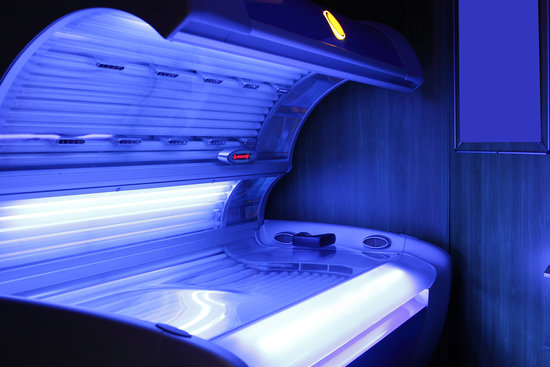What consumers should know before buying a new or used indoor tanning bed. Myths and facts about tanning bed bulbs and the risk of skin cancer.

Before buying indoor tanning beds or indoor tanning lotions, it’s important to separate fact from myth. Consumers should weigh the risks and benefits before buying a tanning bed, tanning outdoors, or visiting tanning salons.

Will Tanning Bed Lotions Protect Against UV Radiation?
Indoor tanning bed lotions are actually tanning accelerators. Most of them contain moisturizers and colorant such as carrot oil, henna, or self-tanning chemicals. Most of them do not contain any sun protection factor (SPF), and that means they offer no protection against UV radiation.
A few lotions contain an additional chemical that gives the user a tingling or warming sensation to simulate heat of the sun. Others contain tyrosine, a chemical believed to increase the level of melanin in the skin. However, several studies have failed to back up this claim, and the FDA issued warnings regarding their use.
Do People Who Tan Easily Need to be Concerned About Skin Cancer?
Just because the skin doesn’t burn when exposed to the sun doesn’t mean it’s not causing damage. Damage from the sun is cumulative. That means it builds up over time, so people often learn about the damage when it’s already too late. Moles and nevi (dark skin spots) can indicate a risk factor for melanoma, and a person’s family history can also affect their risk for skin cancer.
Won’t Using Tanning Beds Protect My Skin?
Plenty of tanners refer to tan as a “healthy glow.” The truth is that a tan is what happens to the skin once it has been damaged. Melanin is produced when the skin’s cells attempt to block UV radiation, and that’s what makes the skin appear darker. A person’s skin type determines the depth of tan he or she can achieve. In most cases, a tan will only provide a sun protection factor (SPF) of 2 or 3.
Don’t Doctors Tell Some People to Use a Tanning Bed?
Yes, but it’s rare. Sometimes a person will have a medical condition like psoriasis, and the doctor will prescribe exposure to UV light for treatment. For these patients, the doctor has determined that the benefits outweigh the risks. It does not mean the risks are non-existent. The treatments are monitored closely and UV output and length of exposure are strictly controlled. On the contrary, indoor tanning methods are not well-regulated, and that makes it much more dangerous.
People Who Tan Before Going on a Vacation Won’t Burn, Right?
Wrong. As mentioned before, a tan will only help a person achieve an SPF of about 2 or 3. The fairer a person’s skin color and the lighter his or her hair and eye color, the less protection they have from UVR. There is a limit to the level of melanin your skin can produce.
 Indoor tanning and outdoor tanning increase the thickness of the skin’s epidermal cells. They cause damage to keratinocytes and melanocytes. Achieving a base tan will not prevent DNA damage. In fact, it only increases a person’s chances of getting skin cancer.
Indoor tanning and outdoor tanning increase the thickness of the skin’s epidermal cells. They cause damage to keratinocytes and melanocytes. Achieving a base tan will not prevent DNA damage. In fact, it only increases a person’s chances of getting skin cancer.
Despite the risks, many people still prefer to tan as part of their beauty ritual. Tanners should closely monitor their exposure to the sun and visit a dermatologist regularly.





